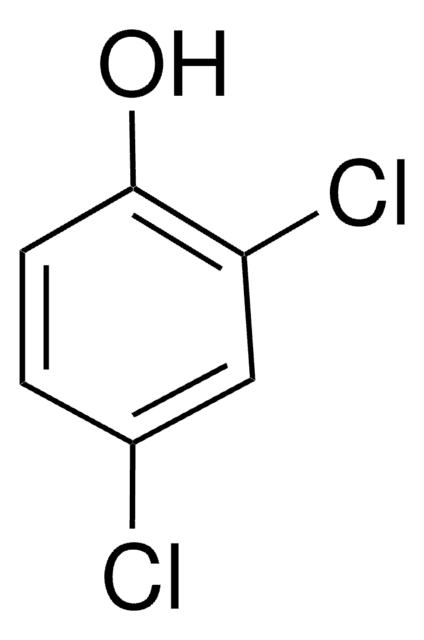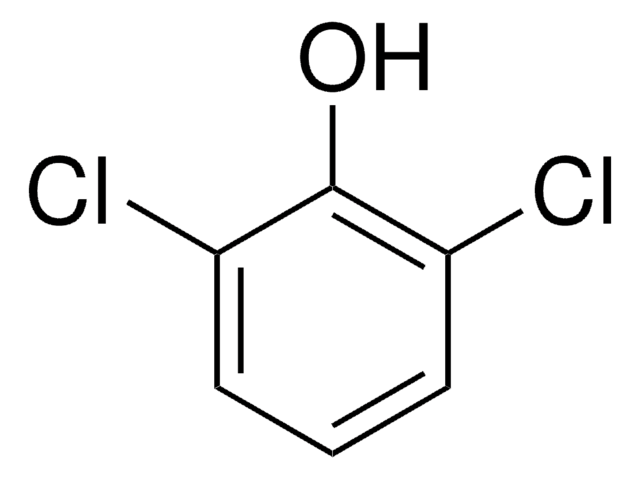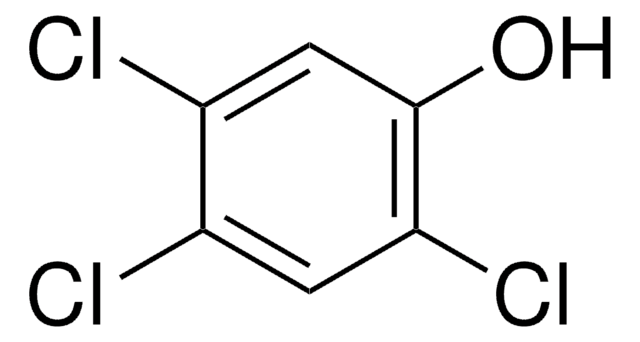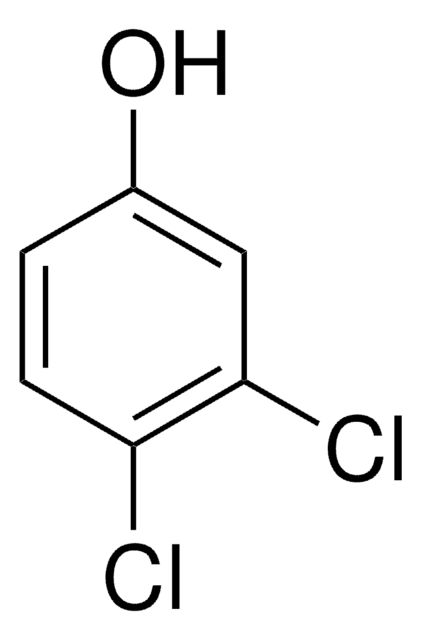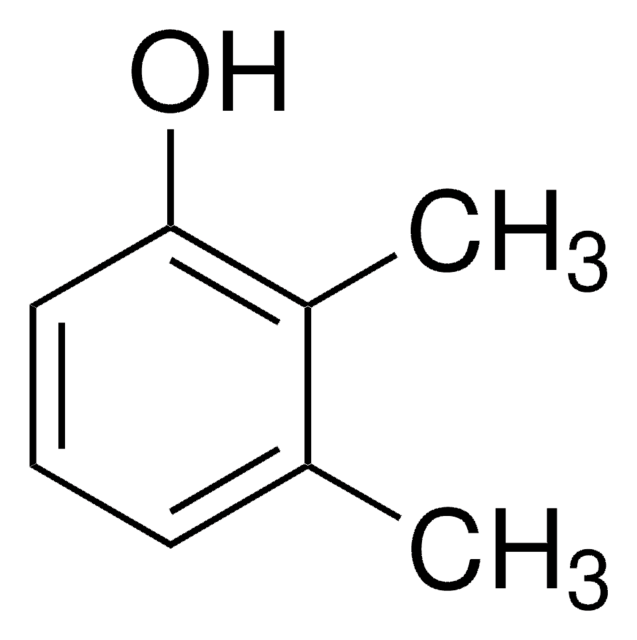All Photos(1)
About This Item
Linear Formula:
Cl2C6H3OH
CAS Number:
Molecular Weight:
163.00
Beilstein:
2043615
EC Number:
MDL number:
UNSPSC Code:
12352100
PubChem Substance ID:
NACRES:
NA.22
Recommended Products
Assay
98%
form
crystals
bp
206 °C (lit.)
mp
55-57 °C (lit.)
SMILES string
Oc1cccc(Cl)c1Cl
InChI
1S/C6H4Cl2O/c7-4-2-1-3-5(9)6(4)8/h1-3,9H
InChI key
UMPSXRYVXUPCOS-UHFFFAOYSA-N
Looking for similar products? Visit Product Comparison Guide
Related Categories
Signal Word
Warning
Hazard Statements
Precautionary Statements
Hazard Classifications
Eye Irrit. 2 - Skin Irrit. 2
Storage Class Code
6.1C - Combustible acute toxic Cat.3 / toxic compounds or compounds which causing chronic effects
WGK
WGK 3
Flash Point(F)
239.0 °F - closed cup
Flash Point(C)
115 °C - closed cup
Personal Protective Equipment
dust mask type N95 (US), Eyeshields, Gloves
Choose from one of the most recent versions:
Already Own This Product?
Find documentation for the products that you have recently purchased in the Document Library.
Customers Also Viewed
Jennifer M Fung et al.
Applied and environmental microbiology, 73(14), 4439-4445 (2007-05-22)
Reductive dehalogenase (RD) gene transcript levels in Dehalococcoides ethenogenes strain 195 were investigated using reverse transcriptase quantitative PCR during growth and reductive dechlorination of tetrachloroethene (PCE), trichloroethene (TCE), or 2,3-dichlorophenol (2,3-DCP). Cells grown with PCE or TCE had high transcript
A Müller et al.
Zentralblatt fur Hygiene und Umweltmedizin = International journal of hygiene and environmental medicine, 196(3), 227-236 (1994-10-01)
In the region of Middle Germany phenols and their derivatives are important toxicological compounds for the environment and man. These compounds from wastes water of brown coal mining are source of danger, which can't estimate now. The influence of phenolic
Hai-Chao Liang et al.
Journal of hazardous materials, 162(2-3), 1415-1422 (2008-07-22)
In this study titanium dioxide nanotube (TNT) arrays were prepared by an anodic oxidation process with post-calcination. The morphology and structure of the TNT films were studied by field-emission scanning electron microscopy (FESEM), X-ray diffraction (XRD), and X-ray photoelectron spectroscopy
Hai-Chao Liang et al.
Chemosphere, 73(5), 805-812 (2008-07-22)
In this study, the highly-ordered TiO(2) nanotube (TNT) arrays on titanium sheets were prepared by an anodic oxidation method. Under UV illumination, the TNT films demonstrated the higher photocatalytic activity in terms of 2,3-dichlorophenol (2,3-DCP) degradation in aqueous solution than
S Goenechea et al.
Archiv der Pharmazie, 334(3), 101-103 (2001-04-24)
The beta-D-glucuronides of 2,3-, 3,4-, and 2,6-dichlorophenol (1-3) were prepared by a modified Koenigs-Knorr synthesis. As the alkaline hydrolysis of perpivaloylated methyl (2,3-dichlorophenyl)-glucuronate 1a led to a dehydrated glucuronide, the preparation of peracetylated methyl dichlorophenylglucuronates with subsequent cleavage of the
Our team of scientists has experience in all areas of research including Life Science, Material Science, Chemical Synthesis, Chromatography, Analytical and many others.
Contact Technical Service
